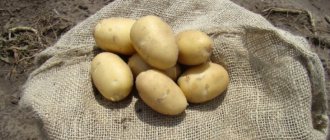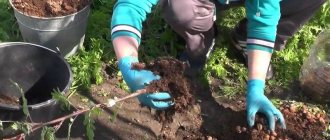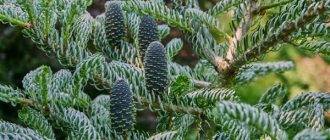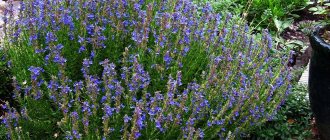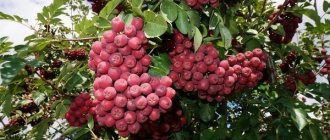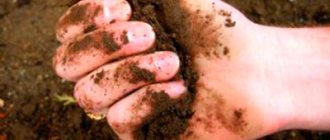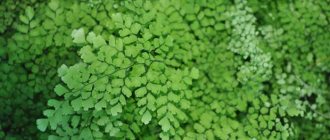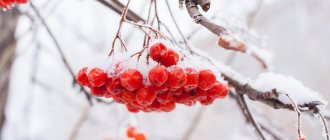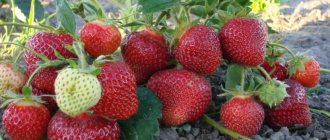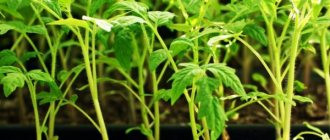The difference between a tree and a bush
A tree has component parts: a root, a tree trunk and branches with branches - a crown.
A shrub differs from a tree in that the plant has several equal main trunks. Lilac is an example of a shrub often used in landscape design to decorate a site (photo). Lilac is an ornamental shrub. A tree differs from a shrub in some other ways: · it has a stronger root system, · a longer life span, · the root of a tree is more powerful than that of a shrub.
Shrubs can serve as hedges. The source of edible, medicinal fruits are fruit trees and shrubs. Decorative varieties are used to decorate gardens, parks, and home areas. Trees are also considered as a source of valuable natural raw materials - wood.
Plants can have a life form, which is defined as subshrubs. Perennial plants, in which the lower shoots are lignified, the upper shoots are herbaceous and freeze in winter, and grow back with warming, are called subshrubs. Lavender, sage, blueberries are subshrubs that live in temperate latitudes.
Personal menu
Caring for rowan trees is the same as caring for an orchard: timely watering, fertilizing and weeding.
The plant is very responsive to fertilizers. In the first year after planting, give up organic matter: it will only make the roots grow worse. Then (a year later) feed with nitrogen fertilizers in the spring, and in the fall apply 40-50 g of superphosphate and 20-30 g of potassium salt for each plant.
Since the roots of mountain ash lie close to the surface of the earth (18-20 cm), the soil around it must be loosened carefully. In addition, deep processing causes abundant growth of root shoots (especially in the first years after planting), which prevents the tree from growing. Therefore, every year in March, before the buds swell, carefully cut off the shoots with pruning shears or a sharp knife, without leaving stumps, otherwise new shoots will come out of the dormant buds.
Pruning is mainly carried out only for sanitary purposes. In vigorous varieties and species from 5-6 years of age, the height is limited to 3-3.5 m, transferring the central conductor to one of the lateral branches, and the skeletal branches to the lateral semi-skeletal ones. This way the crown turns out lighter, and the branches do not shade each other.
A planted rowan tree can delight you for half a century. But it actively bears fruit for no more than 25 years.
Rowan in landscaping
Columnar tree varieties, care features and reviews.
Columnar fruit trees. Columnar fruit trees Olga Nikitina
It is impossible to imagine the Central Russian landscape without the beautiful mountain ash - this breed looks so harmonious and natural in it. In villages, they planted it in front of houses, believing that the tree would protect the family from the evil eye of an unkind person. In landscape design, rowan should be used in a wide variety of compositions.
Usage
Rowan can be safely classified as a highly decorative tree species. Everything about it is beautiful - the shape of the crown, foliage, abundant flowering, bright fruits. In any environment, our heroine will stand out for her merits.
Rowan trees attract special attention in the fall, when their leaves acquire yellow, red and bronze tones. The color of the fruits is also very interesting - from white and pink to orange-red
Rowan is used in various types of plantings (tapelots, groups, alleys). They are good in openwork plantings, which play a significant role in the design of gardens and parks. In the light shade of mountain ash, many shrubs and herbaceous perennials can be planted. Spireas (both spring-flowering and summer-flowering), rose hips, and hydrangeas go well with rowan trees. Among herbaceous perennials, it is better to choose natural species similar to shrubs, such as Volzhanka and Basil.
Of the coniferous species, spruce and pine trees can be recommended to accompany rowan trees, against which they will stand out favorably during flowering and fruiting.
Spireas (both spring-flowering and summer-flowering), rose hips, and hydrangeas go well with rowan trees.
Types and varieties
The city of Kaliningrad is very interesting in terms of urban landscaping. Its parks and squares are decorated with magnificent alleys of rotundifolia rowan, which has a wide pyramidal crown shape and dark green leaves with a white base underneath, for which it is also called the river. mealy. In autumn, the foliage of this species turns a beautiful bronze color.
A bright accent in mixed groups will be p. Kene, which produces milky-white fruits on its shoots in August. A low ornamental shrub fits very well into the design of a small garden.
Kashmir rowan has large white fruits, but unlike the previous species it is considered more winter-hardy and can complement the collection of rowan trees with original fruits.
In the foreground, in tree groups, the river looks great. hybrid 'Gibbsii' with interesting leaf shape and coral-red fruits. This beautiful variety can also be used as a tapeworm, for example, in a recreation area next to a bench or gazebo.
Very expressive in R.'s compositions. Hosta is a magnificent hybrid highly branched shrub up to 2 m high, which is planted both in private gardens and in parks and squares. Its simple dark green glossy leaves have white tomentose pubescence underneath. In June, rather large pinkish flowers appear, collected in corymbose inflorescences. And in the fall, this rowan is decorated with luxurious shiny fruits of bright scarlet color. Slight freezing of this species does not in any way prevent its abundant and annual flowering.
I would like to dwell separately on the varieties of river. ordinary, which are widely represented in our garden centers and are often used in a variety of compositions.
'Pendula' is a weeping form with long drooping shoots. Perfect for decorating secluded places next to a comfortable bench. Its picturesque crown creates an atmosphere of peace and comfort.
'Fastigiata' – a tree with a narrow pyramidal crown formed by upward skeletal branches
It involuntarily attracts the eye, so it can be used as an accent in compositions or in places to which special attention should be drawn. Perfect for creating row plantings
'Brilliant Yelow' is a low tree or shrub with yellow fruits. Used as a solitaire or in groups in the foreground.
'Cardinal Royal' is a beautiful powerful tree with a well-developed crown.
The leaves are two-colored - dark green above, silver below, which gives the plant an elegant look.
'Joseph Rock' is a tree up to 10 m high; in autumn the leaves turn burgundy-red, against which small yellow fruits stand out. This rowan will look best in a solitary planting on the lawn or at the entrance to the house.
'Laciniata' is an original tree up to 10 m high with an openwork crown. Strongly dissected leaves give this decorative form a special grace. Perfect for both single plantings and in groups in the foreground.
Rowan is a universal tree species; among the species and varietal diversity of this genus you can find a large number of not only highly decorative, but also valuable fruit plants.
Planting rowan in open ground
The tree survives frosts well and does not react to shade. Therefore, it can be cultivated in both shaded and sunny places, preferably moist. The rowan tree does not welcome weeds, as well as dense compaction of the soil around the trunk. Prefers cultivation on loams and sandstones.
One-year or two-year-old seedlings are suitable for planting in open areas. They grow quickly, so you can plant them in early spring or mid-autumn. The planting hole must correspond to the size of the root part of the tree. Its diameter on average ranges from 0.5–0.7 m, and its depth – 0.6–1 m. The distance between seedlings should be at least 5 or 6 m.
At the bottom of the planting hole you can put:
- 8–9 kg of humus;
- 0.4–0.5 kg of superphosphate;
- 80–120 g potassium salt;
- 15–25 cm layer of crushed stone for drainage.
After planting and compacting the earth, the root isthmus of the tree should be at ground level.
Rowan storage
Ctenanta varieties and care recommendations
The fruits are edible fresh, soaked and dried, and are used to make jam.
The best way to store is to freeze rowan - this storage method preserves the taste and beneficial properties of rowan. The loss of acids and vitamins will be minimal. Exposure to low temperatures has a positive effect on the cellular structure of the pulp of rowan berries and releases vitamins. This means that the medicinal properties of mountain ash increase.
Collected in September, October, after the first frost, in the morning. The day should be sunny and clear. The berries are washed and dried. Wash thoroughly, as low temperature will not destroy bacteria, it will only stop their activity. Spoiled, wrinkled berries are not suitable for freezing.
After washing, place it on a clean towel or cloth and let it dry a little. The drying room should not be very humid, cold or, conversely, very hot. If necessary, transfer to another dry towel.
After there is no excess moisture, transfer it very carefully into linen bags (no more than 300g). It is advisable to freeze as quickly as possible
If your refrigerator is not suitable for quick freezing, you can freeze it in a more powerful freezer, then transfer it to your refrigerator.
You can freeze it on the balcony. To do this, in late autumn, bunches of rowan berries are collected, placed in small baskets, each layer layered with foliage. The selected brushes must be without leaves. Rowan is left in a cold place. When frost sets in, rowan berries are hung on the balcony. It is necessary to protect from snow and hail.
Dried rowan - the berries are separated from the stalks, sorted and slightly dried. Ovens with a temperature of 60-80 degrees or a ventilated room are well suited for drying. Dried berries should be faded or blackened. With slight pressure they should not turn into a lump. They are stored for no more than two years.
Rowan composition
- about 4.7% fructose;
- 3.7% glucose;
- 0.6% sucrose;
- organic acids - malic, tartaric, succinic, citric and others;
- sorbonic acid - bactericidal properties are used in canning;
- a large amount of vitamins vitamin C, K, E, P;
- carotene;
- flavonoids;
- pectin, tannins;
- folic acid;
- half of the periodic table was found - manganese, iron, zinc, copper and others;
- essential oils;
- fatty oil.
Chokeberry: cultivation and care, reproduction, varieties
Chokeberry (Chokeberry) – Aronia melanocarpa Elliot. Homeland - the Atlantic coast of North America.
Perennial deciduous shrub, height – 3 meters. Up to 6-7 years the bushes are compressed, then they spread out from the weight. The feeding area of one plant is 5-6 m2. The root system is fibrous and branched.
Chokeberry has three types of buds: dormant, mixed and growing. Chokeberry bears fruit on ringlets, fruiting spears and mixed branches.
In the center of the mixed bud there is an inflorescence - a complex shield containing 10-30 flowers. The flowers are bisexual. The life span of one flower is 8-10 days. Self-pollinating flowers are an important natural adaptation of the bush, since thanks to this the fruit set is 80-90%.
Chokeberry flowers
The shoots of black rowan are slightly pubescent and thin. The leaves look like cherry trees. The rowan fruit is apple-shaped and, when biologically ripe, has a dark color with a bloom. The pulp is juicy, tart, contains organic acids, tannins, sugars, and iodine. Fruit weight is from 1 to 1.5 g. Weight of 1000 seeds is 3-4 g.
The peculiarity of chokeberry is that the higher the harvest this year, the later the fruits of the next year ripen. Under unfavorable weather conditions, the process of turning growth buds into fruit buds may stop. Special conditions for growing chokeberry are not required, as it tolerates temperature changes and frosts well. Chokeberry is light-loving, so it does not tolerate shading. Pollination does not occur with its own pollen, so for food purposes it is better to plant in groups.
Black rowan does not tolerate rocky, dry, saline soils. Requires regular watering with soaking of the soil layer up to 50 cm.
Planting chokeberry consists of the following steps:
- Applying fertilizers to the entire planting area, at the rate of 5-6 kg of humus, 100 g of phosphorus and 40 g of potassium fertilizers per 1 m2. If we plant only one plant, then we place the entire above-mentioned norm of fertilizers in the planting hole. For high yields, fertilize annually.
- We plant according to the scheme 3.5 x 2.5 m. Planting on light soils to a depth of 6-8 cm, on heavy soils 2-3 cm deeper than the root collar. You can plant not only seedlings, but also adult bushes.
- Regular watering at the rate of 2-3 buckets of water for an adult bush.
- Caring for chokeberries involves weeding the rows or trunk holes to remove weeds. And, if necessary, protection from pests and diseases.
How to prune chokeberry? One of the features of black rowan is that an adult bush should have more than 40 branches (stems) of different ages. Therefore, pruning of chokeberry, up to 7 years of age, is carried out only for cutting out sick, injured, twisted branches. After 7 years, pruning of chokeberry is required for rejuvenation. We trim it in February-March, later in regions with long winters, but always according to dormant buds.
Black rowan fruits
Propagation of chokeberry
How does chokeberry reproduce? Chokeberry propagates by seeds, root suckers, cuttings, dividing the bush and grafting. The seeds are difficult to germinate, so seed propagation is used only in breeding. Chokeberry propagation is best done by cuttings.
It is better to harvest cuttings in the initial lignification phase - this phase occurs during mass flowering of mountain ash.
Cuttings are cut from young bushes, from the lower part of the shoot. Cutting length 5-10 cm (1-2 internodes). Root into prepared soil: garden soil with humus 1 bucket per m2, on top a layer of river sand with peat 1:1, 4-6 cm high. The cuttings are planted to a depth of 1.5-2 cm with a distance of 5-10 cm and a row spacing of 0 .5 m. Chubuki are watered and covered with film or glass, shading them from the bright sun. After 2-3 weeks, roots should appear. After two months, the shelter is completely removed, and in the fall the cuttings are planted. The cuttings are planted in the main place after 2 years.
Among the chokeberry vaccinations, summer budding with a dormant bud in a T-shaped incision is used.
Varieties of chokeberry:
- Chokeberry Venisa is a universal variety. Berry weight – 1.3 g.
- Chokeberry Nadzeya is a universal variety. Berry weight – 1.2 g.
- Viking, Chernookaya, Altai large, Aron, Rubina, Nero, Hakkia, Nova Ves, Karkhumaki, Dabrovice. The yield and biological characteristics of varietal mountain ash are similar to each other.
In landscape design, chokeberry is used for planting free-growing hedges, or for single planting.
Is rowan a tree or a shrub, after all?
If it’s a tree, then why are there several trunks like a bush?
Dusty
2017.10.14 04:08
User responses: Start playing sports and stop EATING at night......And I didn’t even know...honestly)))...sausage
The only shrubby form of rowan is chokeberry, the other species are trees
If there are several trunks, this means that this is a root shoot, and the tree itself has either been transplanted or cut down.
Narkaman_8km
2017.10.14 17:59
User Answers:
This is a tree.
Diams
2017.10.16 19:53
User Replies:You have no chance...tired of not being paid attention to...Moscow is the capital
is considered a tree species. but there are also shrub forms
why several trunks? the reasons may be different... but most likely at an early age, still in the seedling stage, the plant for some reason lost the upper part of the stem. which provoked branching and the formation of several stems, which then grew into trunks. it’s simple... and happens to trees all the time. I must say, and not only with rowan trees. with linden or birch trees for example...
Here are collected questions that are supposedly similar to the current one
What kind of tree is this? Rowan or lingonberry? Why do you think so? Will Russia eventually have normal roads? Who will ultimately look at the practices? (((When will a woman have a serious long-term relationship? Anna (02/11/1988) Explain to me what the hell are you doing here? The weather is gorgeous! Walks in the forest, barbecues, the beach after all... Did you know that the birch tree is a Ukrainian tree
stofgfe
2017.10.16 22:08
User Answers:
Tree
VAZ_21_07
2017.10.16 22:53
User Answers:
Even in winter, my family and I went on a roller coaster ride and then had a barbecue)… I would say - I love you! at 16 there was not enough love - real, supportive) ... Oh, on the contrary, I would be glad that I stopped constantly calling. Never mind, just accept it
This is a tree. And how you shape it - a bush or a tree - is your business.
strochka
2017.10.17 15:28
User Answers:
French is spoken only in France and Africa... Personally, I wouldn’t study French, it’s for me
A tree of the 3rd magnitude, and what is not just one trunk is a separate life form - a multi-trunked tree
DeaD_GirL
2017.10.17 20:35
User Answers:
...Roof ice kills people more often every winter....10 percent vinegar, a spoonful of sugar, cilantro (grains), cumin, dill, black and red peppers
Tree. But after undergoing stratification in the bird’s stomach, several seeds are sown at once - this is how a bush is formed, i.e. several independent plants nearby.
Zauri
2017.10.17 22:21
User Answers:
yes, it’s normal... I used to willingly travel alone... I especially like to wander around cities alone. We are still... beautiful... Many children, and a lot of grandchildren.
It's probably a mushroom...
Chat_president
2017.10.18 14:28
User Answers:
I don’t know ((9(...Moose cutlets and spaghetti....Ivory - ivory color.
How you form it is what you will receive.
Crazy_ya
2017.10.18 21:15
User Answers:
no and forget it
everyone decided that it was a tree, so be it)), it depends on a lot and on the shape, for example, viburnum is a shrub or a small tree, that is, there are different options, and this is written about, but you will not find descriptions of pine or birch, which it is a shrub or tree, if they grow together it is either an injury at an early stage or isolated plants.
Troll
2017.10.19 09:08
User Answers:
There's nowhere more budget-friendly...
Tree
Caring for mountain ash on the site
In general, almost all rowan trees are fairly undemanding trees, decorative throughout the year. In mid-spring, they are covered with lacy foliage of a complex pinnately dissected shape, which darkens over time or (in some varieties) acquires a bronze or silver tint. Then numerous white-cream flowers appear on the tree, collected in large fluffy inflorescences with a strong aroma. In autumn, in their place, richly colored berries ripen, which are officially considered apples. They are collected in clusters and, as we have already mentioned, depending on the type of rowan, they can be not only the usual yellow-orange, but also almost white, lemon, pink, scarlet and even black. Well, in the fall the leaves turn yellow, orange, scarlet and burgundy. With the onset of winter, the rowan tree does not immediately and completely shed its bright outfit. Even when the leaves completely fall off, clusters of berries remain hanging on the branches, which do not fall off even under the weight of snow and attract many birds to the area - blackbirds, bullfinches, bee-eaters, waxwings and even pigeons and sparrows.
With good care, rowan grows up to 4-10 m in height. It is undemanding to soil, although it prefers light fertile loams with moderate moisture. The only requirement is regular watering and no stagnation of water at the roots.
It is best to plant rowan seedlings in autumn or early spring. If you have a choice, plant rowan in a sunny, wind-protected place on the site, at a distance of at least 5 m from other large trees - this way it will bloom and bear fruit better. If desired, when the seedlings grow up, form a trunk up to 80 cm in height and plant a couple of cuttings into its upper part, from which you will subsequently form a crown.
The rowan tree does not like being in the neighborhood only with juniper and hawthorn - these plants can be a source of various infections for each other, so they need to be planted on the territory as far as possible from one another, and it is better not to arrange them in one area at all.
Rowan is quite resistant to various pests and diseases, so basically in the future caring for it will be reduced to mulching the tree trunk, timely removal of weeds, watering and fertilizing (as for fruit trees). Every year, in early spring, before the buds open, mountain ash needs sanitary and formative pruning of the crown.
Rowan looks elegant and bright at any time of the year, which is very valuable in our climate. Whatever type and variety you choose, this plant will create unique accents in your garden, combining well with other trees and shrubs or looking great as a tapeworm - check for yourself.
Hybrid fruit rowan
Pomegranate (Crataegosorbus Granatnaja)
A fruit variety obtained by I.V. Michurin from crossing mountain ash with blood-red hawthorn. Tree up to 4 m tall.
The fruits are large (1.0–1.6 g), sweet and sour, with juicy yellow pulp.
The variety is winter-hardy, high-yielding.
rowan pomegranate
Nevezhinskaya
Folk selection variety, p. ordinary. Tree 8–10 m tall, often multi-stemmed. The fruits are orange-red, up to 1.5 cm in diameter, sweet.
Scarlet large
Fruit variety VNIIGiSPR named after. I. V. Michurina.
The tree is 5–6 m high. The fruits are very large, 1.5–2 cm in diameter, scarlet, juicy, sweet and sour.
Rowan Ruby
Where does rowan grow?
Grows in the undergrowth of coniferous and mixed forests. There are both individual trees and small groups. Rowan grows in forest edges, clearings, clearings, ravines, river banks, meadows. It can be found in rocky places, in rocky areas. It takes root well in populated areas and along roads.
Grows best in fertile, sandy and loamy soils. Shade-tolerant, resistant to cold and drought. It has a high life expectancy - about 200 years. It bears fruits in open places after five or seven years, under the forest canopy only after 15. An important distinguishing feature is fruiting every year, especially a lot of berries every three years.
The most common type, the mountain ash, is especially popular. This species can be found from the Far North to the Caucasus, from the western borders to the Urals.
Application of rowan
Rowan is a universal plant. Helps with many diseases. How this fits into a rowan tree is unknown. It is a reliable, verified fact that not one plant has such a wide range of uses as mountain ash, which helps with most of the diseases we encounter.
Rowan has a number of interesting qualities. For example, if you put a branch in dirty water, then after a few hours the water will be suitable for drinking, without boiling. This happens because the tree releases volatile substances - phytoncides that can kill bacteria.
- anemia, exhaustion, increases the body's resistance, restores strength after illnesses;
- treats any diseases associated with a lack of vitamins;
- useful for children to increase immunity;
- Rowan is used for rheumatism, gout, hypertension;
- berries are useful - hemorrhoids, scrofula, atherosclerosis;
- Rowan is used for lung diseases, colds, sore throat, runny nose;
- normalizes stool after dysentery, restores water-salt metabolism;
- reduces bile stagnation in diseases of the biliary tract;
- Rowan berry is useful - problems with the liver and stomach:
- heavy menstruation leading to a decrease in hemoglobin, an infusion of fresh, dry rowan berries helps;
- inflammation of the gallbladder - rowan juice 1 tsp. 30 minutes before meals;
- dry fruits and juice reduce permeability and fragility of capillaries, improve blood circulation;
- lowers blood cholesterol levels;
- fruit powder - diabetes, obesity, dyspepsia in young children;
- infusion of rowan bark - liver diseases;
- infusion of rowan leaves is a vitamin remedy since there is more vitamin C than in fruits;
- decoction of the bark - diseases of the skin, mucous membranes, first and second degree burns, rinsing for tonsillitis;
- Rowan phytoncides have a detrimental effect on Staphylococcus aureus, salmonella, and mold;
- Rowan juice - gastritis with low acidity, atherosclerosis, as a laxative for children, normalizes metabolism. An ancient Russian remedy for internal and external hemorrhoids;
- fresh rowan leaves - antimicrobial properties. Rub it, place it on the wound, and fix it. The dressing is replaced after 24 hours.
- Rowan face masks are very useful
- Rowan helps restore and improve hair health, especially useful for oily hair. more details
Other areas
- the bark contains about 14% tannins and is used in the leather industry;
- purple-red dyes are made from the berries, and dark brown dye is made from the shoots and leaves;
- widely used in the manufacture of furniture. There were times when wicker furniture, baskets and other household items were made from young rods and trunks;
- Rowan wood was used to make musical instruments;
- has increased fire resistance.
Do-it-yourself rowan
By the way, many needlewomen forget that you can also make original jewelry from natural materials, for example, do-it-yourself rowan beads, which are perfect for a themed autumn photo shoot. Many creative brides add such elements to their hand-made wedding bouquet, and it looks more refined and delicate than those for which ordinary fresh roses are used. You can make a rowan wreath with your own hands using not only bunches of berries, but also twigs with yellowed leaves and other autumn materials.
If you decide to make crafts from rowan with your own hands, you can find photo ideas on the Internet, and the first thing you will stumble upon on the vastness of the global web is a beaded tree. Its craftswomen perform it in two versions: autumn - with yellowed leaves, winter - with a “snow” cap over the bunches. The berries themselves can be made using several beads, or you can take large red beads, and for the leaves twist five green beads in the same way as we did for other beaded trees. You can make a prefabricated autumn bouquet with your own hands from beads, i.e. make not only rowan branches, but also other flowers and plants, which are arranged into one beautiful flower arrangement. For such crafts, thin wire is used, from which individual branches are created. At the end, these thin branches are combined into several thick ones, from which the finished tree is formed. To make your creation pleasing to the eye, it must be mounted on a stand or in a decorative pot; plaster or alabaster is used for fixation. The pot also needs to be decorated; you can draw a “Khokhloma” pattern on it or simply wrap it with twine.
DIY paper rowan
Naturally, if we are talking about rowan berries with our own hands, then we must not forget about the most accessible material for creativity - this is, of course, paper. The quilling technique allows you to create bright, voluminous floral paintings and cards using only paper strips and glue. First you need to think about what a bouquet of rowan berries will look like with your own hands, perhaps even make a sketch on a sheet of thick white cardboard where the berries will be located and where the leaves will be. As a basis, you can take a picture from the Internet and modify it to suit our technique.
Ready-made strips can be bought in stores, along with other art supplies; you can also cut them out yourself by first drawing a sheet of red and green paper into strips with a pencil. The width of one strip can be 5-7 mm. Each strip is twisted, then the resulting element must be shaped (drop, heart, eye or circle). And from many such elements the finished picture is laid out; you must glue them to the surface using PVA.
There is another available material from which you can make, for example, tulips from candies - this is corrugated paper. Children like to work with corrugated paper because it easily glues, cuts and creases. And a DIY rowan tree made from paper will fill your home with bright colors and will lift your spirits on cold, rainy autumn evenings.
Rowan propagation
Common rowan reproduces by seed and vegetative methods. Species rowan is usually propagated by seeds. Sowing of seeds is carried out in the fall: they are washed from the pulp, planted to a depth of 5-10 mm and mulched on top with fallen leaves. If you decide to sow seeds in the spring, then mix them with coarse sand (1:3) and keep them for one or two months at room temperature before sowing, and then 3-4 months in the vegetable drawer of the refrigerator. When the seedlings appear, they are regularly watered and weeded, the soil around them is loosened, and in the fall the seedlings are transplanted into a schoolhouse. Rowan from seeds begins to bear fruit in the fourth or fifth year.
Valuable rowan varieties are propagated vegetatively: by grafting, lignified and green cuttings, shoots and layering. Rootstocks for grafting varietal cuttings can be seedlings of rowan, Nevezhinsky or Moravian. Budding is carried out in April, at the beginning of sap flow, or in July-August. The bandage from the vaccination site is removed after 3 weeks. The top of the rootstock is cut off, leaving a thorn, to which the growing varietal shoot is subsequently tied.
Only self-rooted trees are propagated by shoots. During the process of rooting green cuttings, only 45 to 60% of the planting material takes root, and lignified rowan cuttings root even worse.
Rowan - decoration of our gardens
The mountain ash (Sorbus aucuparia) is one of the most revered trees in Rus'. Rowan decorates the autumn landscape with fiery colors, and with the onset of the first frost, its fruits become the most valuable food raw material not only for humans, but also for birds.
The fruits of the mountain ash are simply a storehouse of vitamins and phosphorus and have long been used in home cooking to make wine, beer, liqueurs, juices, jams, preserves, jellies, jelly, desserts, pies and sauces. Rowan berries taste sweeter after the first frost. They are superior to carrots in carotene content, and they contain much more vitamin C than apples and lemons. Particularly valuable is their content of the microelements phosphorus, without which the human body cannot fully absorb calcium. In the fight against childhood rickets and female osteoporosis, mountain ash can easily compete with expensive varieties of fish.
Rowan contains a lot of tannins and sorbic acid, which has very strong bactericidal properties. Rowan berries have long been used as an antiscorbutic remedy. They are a natural multivitamin complex and an excellent general strengthening agent. Rowan is healing for many diseases. In folk medicine, the fruits of the mountain ash are used for anemia, kidney and liver diseases, diabetes, especially with complications in small vessels, gastrointestinal disorders, hemorrhoids, etc.
Rowan juice stimulates blood circulation, reduces cholesterol levels in the blood, and strengthens capillaries. It is useful for hypertensive patients suffering from heart and vascular diseases. According to folk recipes. Daily consumption of at least a few fresh rowan berries helps pregnant women avoid severe toxicosis. Tea made from rowan fruits eases menopause. The bitterness and acids of rowan berries exhibit disinfectant and antibiotic properties, inhibit fermentation and putrefactive processes in the intestines, and improve digestion.
Traditional medicine recommends drinking a vitamin drink instead of the usual black tea to improve complexion. For a glass of boiling water, take 1 teaspoon of your usual tea, to preserve the taste and aroma, and one teaspoon of a mixture of 1 part of dried rowan berries and 2 parts of nettle.
Hurry up to prepare rowan for the winter. Rowan berries are stored in a variety of ways. You can make marshmallows, jam from it, you can freeze, dry or prepare soaked rowan.
A common way to prepare rowan is through jam. If you can’t imagine drinking tea without jam, then it’s better to choose rowan. Separate the rowan, removed after the first frost, from the brushes and dry in a low-heat oven for 2 hours. Then pour boiling water and leave in it for five minutes. Boil syrup 1.3 kg of sugar and 3 glasses of water for 1 kg of berries. Pour hot syrup over the berries and leave overnight. Bring the jam to a boil several times and remove. After complete cooling, drain the syrup and boil slightly without the berries. Place the berries in sterile jars and fill them with boiled syrup.
Another simplified recipe for rowan sweets. Pass the berries separated from the branches and washed through a meat grinder and mix with sugar in a 1:1 ratio. Seal with plastic lids into small, clean jars and keep in the refrigerator. A spoon of this mixture will completely replace a slice of lemon and will bring more benefits.
The fruits of the mountain ash are extremely loved by birds, forest animals, squirrels, and rodents. Since pagan times, rowan has been a part of the life and culture of Celtic and Scandinavian tribes. In their beliefs, rowan was endowed with magical powers and was associated with protection from the evil eye and witchcraft. The common rowan was planted near the home, and in some places it is still considered a bad omen to uproot or damage it in your yard. Rowan wood is hard and elastic, easy to process. Since ancient times, spindles and runes have been made from rowan trees, and a natural red dye for fabric has been made from the berries. Rowan leaves and berries can be used in dried flower arrangements and also as home decorations for Christmas.
Garden Cinderella
Since rowan is a rather tall tree, it is advisable to plant it along the border of the garden, preferably on the north side, so as not to shade the area.
It grows well on any soil, even poor soil, but prefers loam that retains water well. On sandstone and clay, the roots suffer either from a lack of moisture or from excess moisture and lack of oxygen. It is better to plant rowan in the fall. It is possible, of course, in the spring - before the buds swell. But in March - April there are a lot of other worries, and therefore if you want to get a sweet rowan, do it now.
Rowan loves light and warmth, but groundwater lying close to the surface (less than 1.5 m) does not.
The best planting material is grafted 1-2 year old seedlings. If the trees are dry, keep them in water for a day or two, and then dip them in a mixture of humus and earth (1:1), adding a little mullein.
Plant plants at a distance of 2-2.5 m from each other. Prepare planting holes in advance and add 1 square meter. m 8 kg of manure or peat compost, 40-60 g of superphosphate, 20-30 g of potassium salt.
Be sure to water (2-3 buckets are enough). To prevent water from draining, make a hole, and after watering, mulch the ground with peat. And pay attention to the root collar: it should be slightly above the soil level.
Common rowan description
The tree is tall, in some cases reaching a height of twenty meters. Trunk diameter up to 40cm. The bark is smooth, grayish, the crown is ovoid. The red rowan leaf is imparipinnate, regular, up to 20 cm long. Consist of ten, fifteen elongated whole leaves.
It begins to bloom in May and June with the appearance of the first leaves. The flowers are white with a creamy tint and have a strong scent reminiscent of bitter almonds. Pollinated by insects, also capable of self-pollination.
The fruits of red rowan ripen in September and remain on the branches for a long time. They are false berry-shaped apples of a spherical shape. Ripe berries are bright red, taste sour, tart, and have a soft consistency.
Botanical description
The common rowan is a tree or shrub and reaches a height of no more than 12 m. Its crown is rounded, its shoots are pubescent, grayish-red. The bark of adult plants is smooth, shiny, yellow-gray or gray-brown. The alternate, imparipinnate leaves of rowan reach a length of 20 cm and consist of 7-15 elongated, jagged, pointed leaflets along the edge, green and matte on the upper side and lighter and pubescent on the lower side. In autumn, the leaves turn golden and red.
Numerous white five-membered rowan flowers with a not very pleasant smell are collected in thick terminal corymbs up to 10 cm in diameter. The fruit is an orange-red juicy apple up to 1 cm in diameter. Rowan blossoms begin in May or June, and the fruits ripen by late summer or early autumn.
Growing chokeberry - planting and care
Rowan does not tolerate gas pollution and smoke in the air, as well as waterlogging and swampy soil.
- Raspberry pests
Rowan wood is hard and elastic, but at the same time easy to process. Since ancient times, spindles and runes have been made from it. A dye for fabric is produced from rowan fruits.
Plant compatibility in plantings
Landscape design considers plants, taking into account their requirements for soil, lighting, watering, compatibility of plant sizes, configurations and light spots. There is another approach when planting a garden or landscaping areas: you should take into account the friendliness of plants with each other, this is called allelopathy.
All plants, including trees and shrubs, have likes and dislikes. This affects the fact that they contribute to the growth and health of nearby plants, or their proximity causes mutual oppression and disease. Lilac, viburnum and rowan are mutually loyal. Lilac also goes well with apple trees, cherry plums, apricots, plums, and roses. Recognizes proximity to rose hips, acacia, jasmine, peach, barberry, and linden.
Harmonious plantings will be achieved if you plant lilacs next to mulberries, currants, hawthorn, elderberry, and bird cherry. Finding lilac next to blackberry, willow, dogwood, birch, hazel and walnut is not advisable. Lilac does not get along with cedar, pine, spruce and oak.
Viburnum is a monoplant plant. She doesn't show much sympathy to anyone. Viburnum can suppress shrubs or trees planted close to it. Designers create compositions where viburnum is part of the group: mountain ash, oak, linden. Viburnum is particularly intolerant of proximity to spruce.
Some experts also classify lilac as a monoplant plant, advising its use as a hedge and single plantings.
Rowan is more flexible and compatible with raspberries, spruce, pine and cherries. Walnut, acacia, rose, chestnut, jasmine, according to experts, are not suitable neighbors for rowan. Some sources name both lilac and viburnum in this series.
It seems that the issue of plant compatibility requires even more observation and study. The plant variety also matters. Taking a closer look at the inhabitants of the site, you can immediately see where the plants are harmonious with each other; it feels like a piece of paradise. In another case, depression and frequent diseases of trees and seedlings lead to conclusions about their possible incompatibility.
